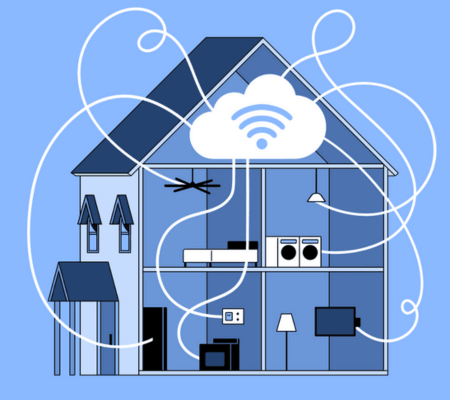Smart street lighting systems are becoming increasingly popular in cities around the world. These systems use advanced technology to improve the efficiency and effectiveness of street lighting while also reducing energy consumption and costs. Smart street lighting systems typically include sensors, controllers, and communication devices that allow them to adjust lighting levels based on real-time data.

One of the primary benefits of smart street lighting systems is their ability to reduce energy consumption. By using sensors to detect when people and vehicles are present, these systems can adjust lighting levels to minimize energy usage. In addition, smart street lighting systems can be programmed to turn off or dim lights during periods of low activity, further reducing energy consumption and costs.
Another benefit of smart street lighting systems is their ability to improve public safety. By providing better lighting in areas that are typically dark or poorly lit, these systems can help prevent crime and accidents. In addition, smart street lighting systems can be programmed to alert authorities when unusual activity is detected, allowing for a faster response time in emergencies.
Table of Contents
ToggleUnderstanding: What is Smart Street Lighting System?

Smart street lighting system is an intelligent lighting system that uses advanced technologies to provide efficient and effective lighting solutions for public spaces. The system is designed to optimize energy consumption and reduce costs while improving the quality of lighting and enhancing safety and security.
The smart street lighting system is equipped with a range of sensors that collect data on various parameters such as traffic flow, ambient light levels, and weather conditions. This data is then analyzed in real-time to adjust the brightness and intensity of the lights accordingly. For instance, when there is no traffic on the road, the system can automatically dim the lights to save energy. Conversely, when there is heavy traffic, the lights can be brightened to improve visibility and safety.
Another key feature of the smart street lighting system is its ability to detect faults and failures in the lighting infrastructure. The system can automatically notify maintenance personnel when a light is malfunctioning or needs replacement, reducing the time and cost associated with manual inspections.
The smart street lighting system also offers remote monitoring and control capabilities, allowing operators to adjust the lighting settings and parameters from a central location. This feature enables operators to respond quickly to changing conditions and optimize the lighting system for maximum efficiency and effectiveness.
Overall, the smart street lighting system is an innovative solution that offers numerous benefits, including energy savings, cost reduction, improved safety and security, and enhanced quality of lighting. As cities continue to grow and evolve, the smart street lighting system will play an increasingly important role in creating sustainable and livable urban environments.
Best 15 Outdoor Led Street Light Manufacturers In The World
Components of a Smart Street Lighting System

A smart street lighting system is a network of lighting fixtures, sensors, controllers, and communication networks that work together to provide efficient and effective lighting.
Sensors
Sensors are an essential component of a smart street lighting system. They are used to detect the presence of people, vehicles, and other objects in the vicinity of the lighting fixtures. Some common types of sensors used in smart street lighting systems include:
- Motion sensors
- Light sensors
- Temperature sensors
- Humidity sensors
- Presence sensors
Controllers
Controllers are responsible for managing the lighting fixtures and sensors in a smart street lighting system. They collect data from the sensors and use it to adjust the lighting output based on the needs of the environment. Some common types of controllers used in smart street lighting systems include:
- Centralized controllers
- Decentralized controllers
- Wireless controllers
- Programmable controllers
Communication Network
The communication network is the backbone of a smart street lighting system. It is responsible for transmitting data between the lighting fixtures, sensors, and controllers. Some common types of communication networks used in smart street lighting systems include:
- Wi-Fi
- Bluetooth
- Zigbee
- LoRaWAN
- Cellular networks
Lighting Fixtures
Lighting fixtures are the most visible component of a smart street lighting system. They are responsible for providing light to the environment. Some common types of lighting fixtures used in smart street lighting systems include:
- LED streetlights
- Solar-powered streetlights
- High-pressure sodium streetlights
- Metal halide streetlights
Overall, a smart street lighting system is a complex network of components that work together to provide efficient and effective lighting. By using sensors, controllers, communication networks, and lighting fixtures, smart street lighting systems can significantly reduce energy consumption, improve safety, and enhance the overall quality of life in urban environments.
Benefits of Smart Street Lighting System

Smart street lighting systems offer numerous benefits over traditional street lighting systems. Some of the most significant benefits of smart street lighting systems are:
Energy Efficiency
One of the most significant benefits of smart street lighting systems is their energy efficiency. Smart street lighting systems use LED lights, which are much more energy-efficient than traditional street lights. LED lights use up to 80% less energy than traditional street lights, which can significantly reduce energy consumption and greenhouse gas emissions.
Cost Savings
Smart street lighting systems can also provide significant cost savings. Because they are more energy-efficient, smart street lighting systems require less maintenance and have a longer lifespan than traditional street lights. This means that they require fewer replacements and repairs, which can save municipalities a significant amount of money over time.
Improved Safety
Smart street lighting systems can also improve safety in cities and towns. By providing better lighting in public areas, smart street lighting systems can help prevent crime and accidents. They can also help improve visibility for drivers and pedestrians, making it easier for them to navigate and avoid potential hazards.
Environmental Sustainability
Smart street lighting systems are also more environmentally sustainable than traditional street lighting systems. By using LED lights and other energy-efficient technologies, smart street lighting systems can significantly reduce greenhouse gas emissions and help mitigate the effects of climate change. This makes them an excellent choice for municipalities that are committed to sustainability and reducing their carbon footprint.
Overall, smart street lighting systems offer numerous benefits over traditional street lighting systems. From energy efficiency and cost savings to improved safety and environmental sustainability, smart street lighting systems are a smart choice for municipalities looking to improve their public lighting systems.
Implementation of Smart Street Lighting System

Smart street lighting systems are becoming increasingly popular due to their numerous benefits, including energy efficiency, cost savings, and improved safety. The implementation of a smart street lighting system involves two main processes: installation and integration with existing infrastructure.
Installation Process
The installation process of a smart street lighting system involves the following steps:
- Site Survey: The first step in the installation process is to conduct a site survey to determine the number of streetlights required and their optimal locations. This survey also helps to identify any potential obstacles or challenges that may arise during the installation process.
- Installation of Lighting Fixtures: After the site survey, the next step is to install the lighting fixtures. Smart street lighting systems use LED lights, which are more energy-efficient than traditional lighting fixtures. The installation process involves mounting the fixtures on poles and wiring them to the power supply.
- Installation of Control Units: The control units are the brains of the smart street lighting system. They are responsible for controlling the lighting levels, monitoring energy usage, and communicating with other devices in the system. The control units are typically installed in a central location, such as a control room or a data center.
- Testing and Commissioning: Once the installation is complete, the system is tested to ensure that it is functioning correctly. This involves testing the lighting levels, energy usage, and communication between the control units and other devices in the system. Once the testing is complete, the system is commissioned and ready for use.
Integration with Existing Infrastructure
The integration of a smart street lighting system with existing infrastructure involves the following steps:
- Communication Protocol: The first step in integrating the system is to establish a communication protocol. Smart street lighting systems use various communication protocols, such as LoRaWAN, ZigBee, and Bluetooth, to communicate with other devices in the system.
- Integration with Power Supply: The next step is to integrate the system with the power supply. This involves connecting the lighting fixtures and control units to the existing power supply infrastructure.
- Integration with Other Devices: Smart street lighting systems can be integrated with other devices, such as sensors and cameras, to improve their functionality. For example, sensors can be used to detect when a pedestrian or vehicle is approaching and adjust the lighting levels accordingly.
In conclusion, the implementation of a smart street lighting system involves the installation of lighting fixtures and control units, as well as the integration of the system with existing infrastructure. By following these steps, cities and municipalities can benefit from the many advantages of smart street lighting systems.
Challenges in Smart Street Lighting System Implementation
Smart street lighting systems are an essential component of smart cities, offering energy-efficient and cost-effective solutions for public lighting. However, implementing these systems presents various challenges that must be addressed to ensure their successful deployment. This section will discuss some of the significant challenges in smart street lighting system implementation, including initial costs, technical challenges, and regulatory challenges.
Initial Costs
One of the most significant challenges in implementing smart street lighting systems is the initial costs. These systems require significant investments in hardware, software, and infrastructure. The cost of replacing traditional street lights with smart LED lights, sensors, and controllers can be high, and cities may not have the necessary funds to cover these costs.
Technical Challenges
Smart street lighting systems rely on complex technologies such as sensors, wireless communication, and cloud computing. These technologies must work together seamlessly to ensure the proper functioning of the system. Technical challenges such as network connectivity, data management, and system integration can arise during the implementation process. Moreover, maintenance and repair of these systems require specialized skills and knowledge, which may not be readily available.
Regulatory Challenges
Regulatory challenges can also hinder the implementation of smart street lighting systems. These challenges can include legal and policy issues related to data privacy, security, and ownership. Cities must ensure that the data collected by these systems is protected and used ethically. Additionally, regulatory frameworks must be in place to ensure that the implementation of these systems does not infringe on citizens’ rights.
In conclusion, implementing smart street lighting systems presents various challenges that must be addressed to ensure their successful deployment. Cities must carefully consider the initial costs, technical challenges, and regulatory challenges associated with these systems to ensure that they are implemented effectively.
Future of Smart Street Lighting System
Trends
As smart city initiatives continue to grow, the demand for energy-efficient and cost-effective street lighting solutions will increase. The future of smart street lighting systems will be characterized by the integration of various technologies, including the Internet of Things (IoT), artificial intelligence (AI), and cloud computing. This integration will enable streetlights to communicate with each other and with other smart city devices, such as traffic lights and surveillance cameras, to provide real-time data and insights.
One trend that is already emerging is the use of sensors to detect and respond to changes in ambient light, weather conditions, and pedestrian and vehicular traffic. By adjusting the brightness and timing of streetlights based on these factors, smart street lighting systems can significantly reduce energy consumption and maintenance costs.
Another trend is the adoption of LED lighting, which is more energy-efficient and longer-lasting than traditional lighting technologies. LED streetlights can also be equipped with sensors and other smart features, such as dimming and color-changing capabilities, to further enhance their functionality and sustainability.
Potential Developments
Looking ahead, there










